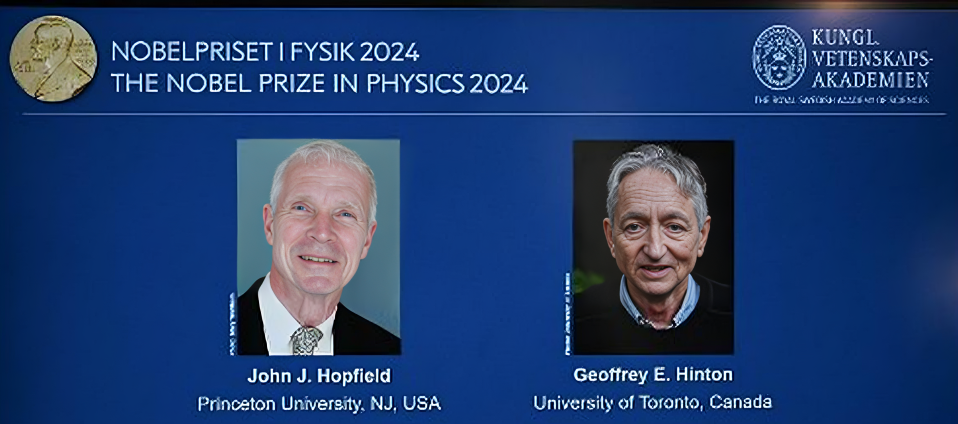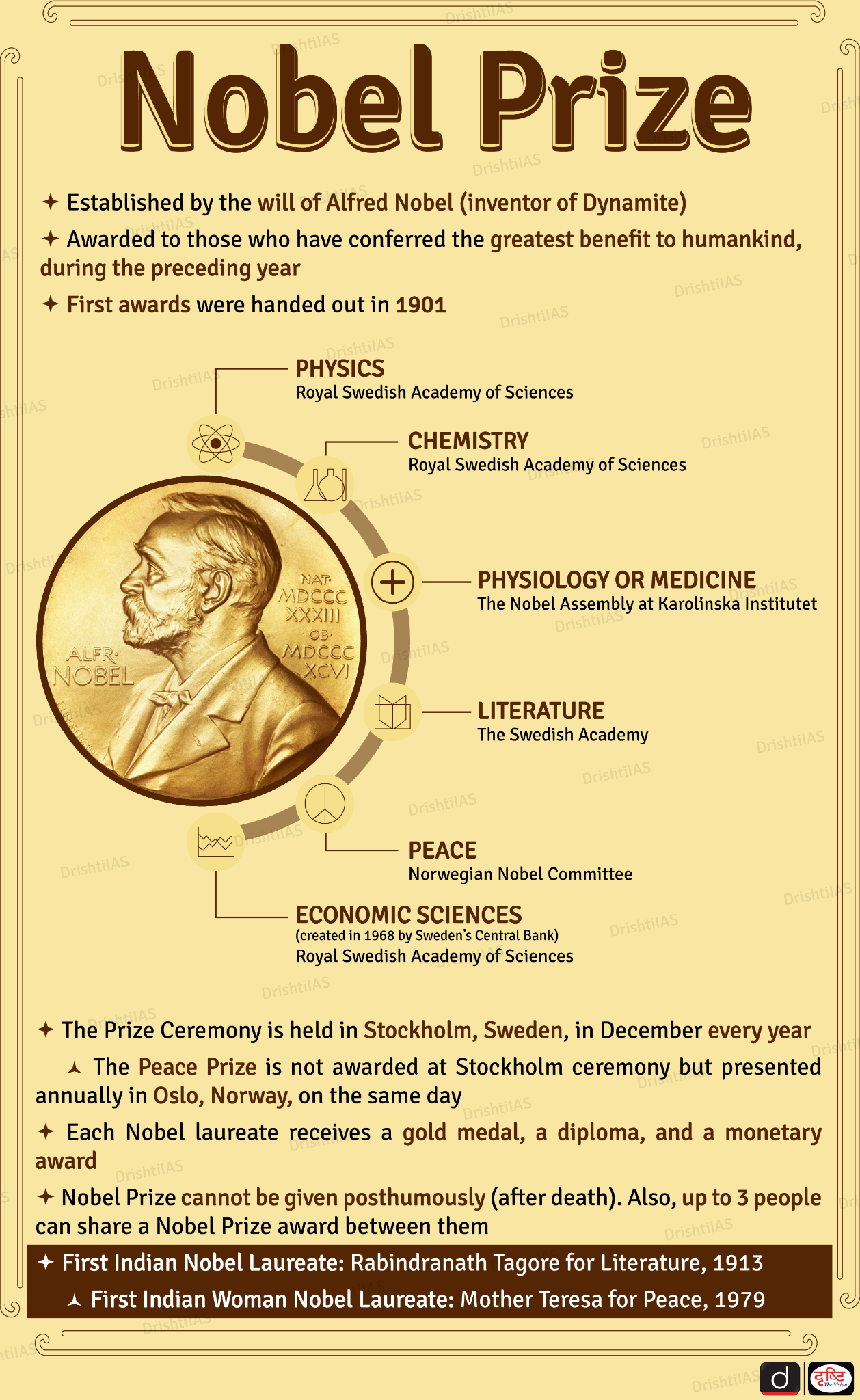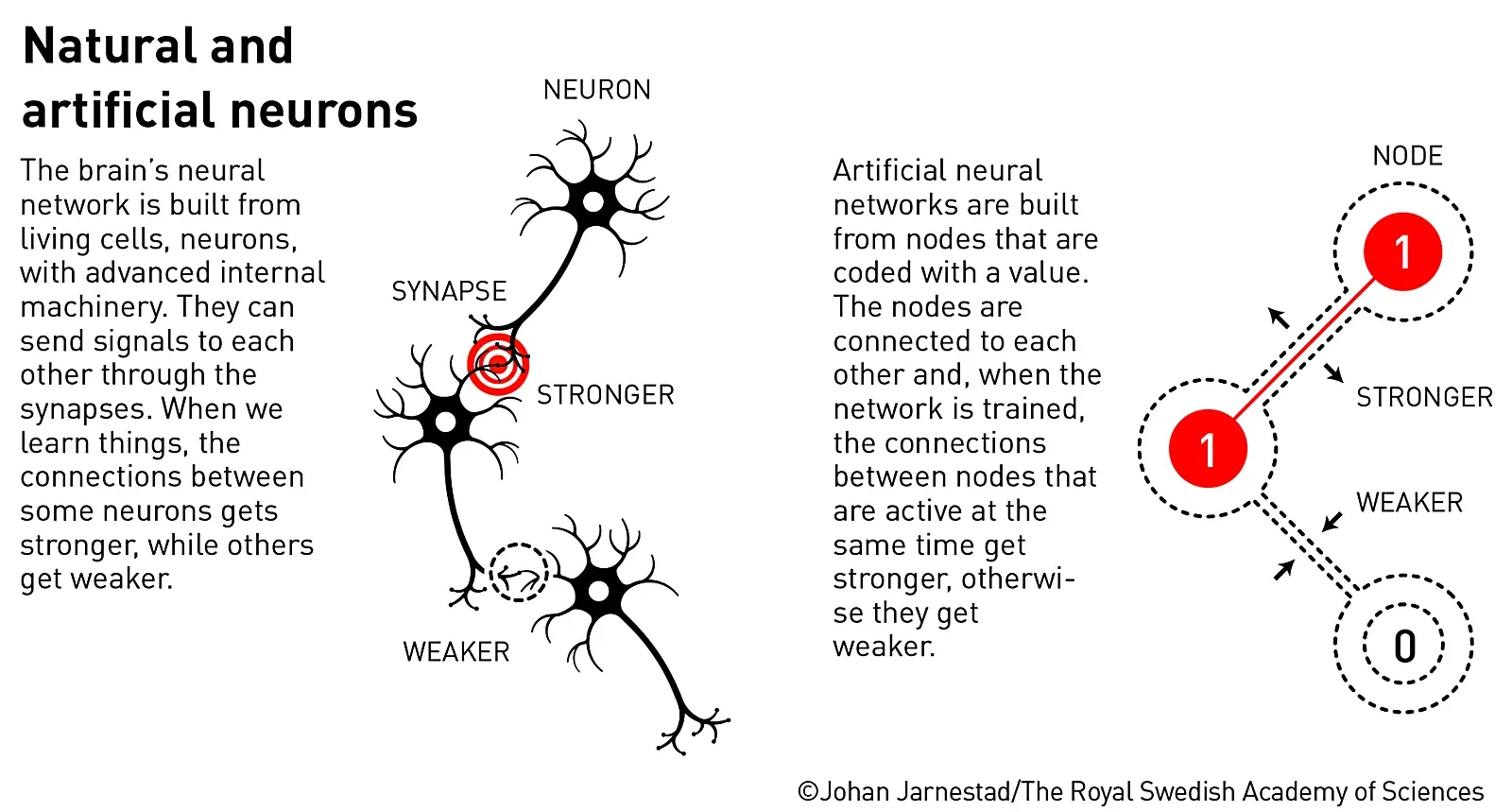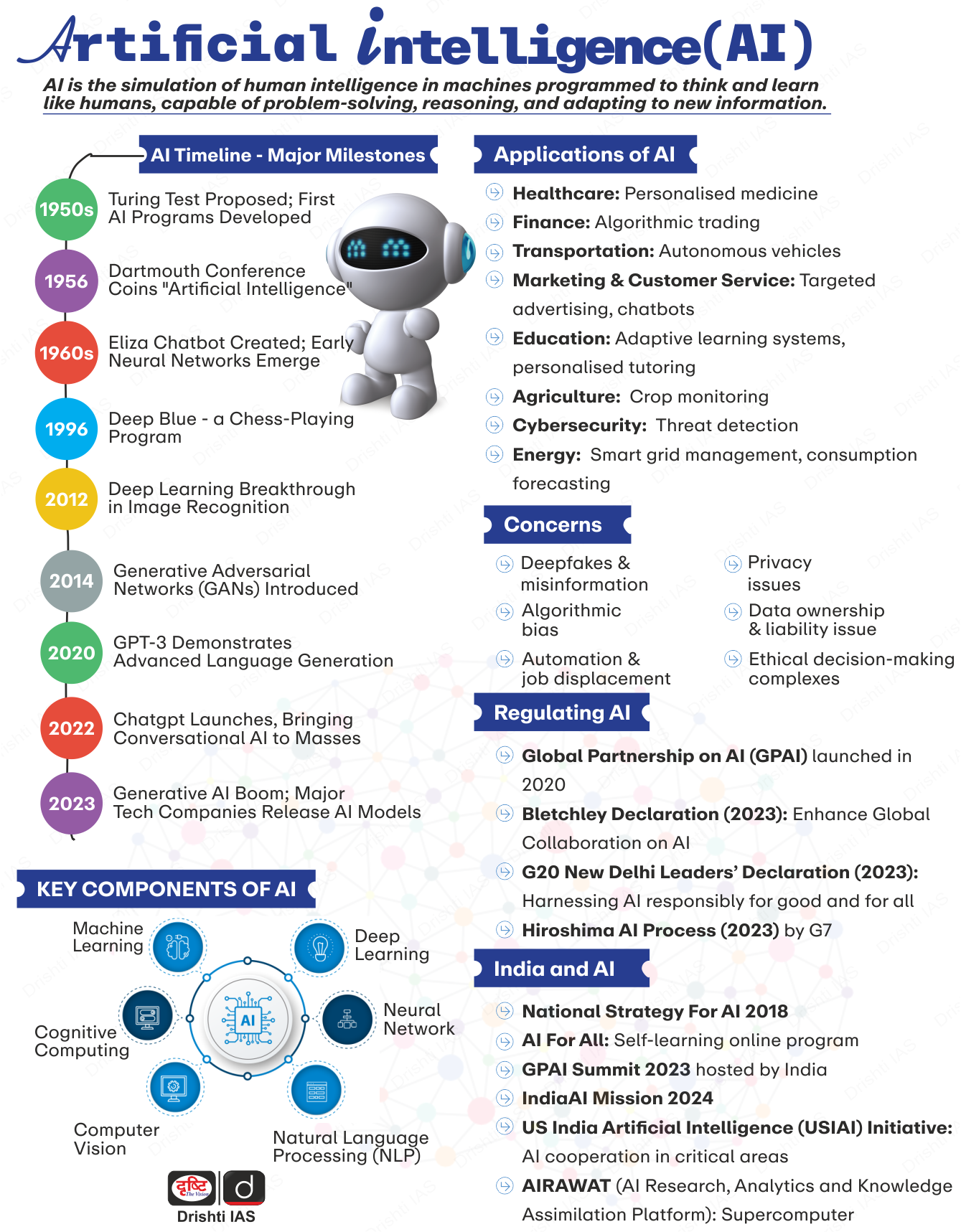Science & Technology
The Nobel Prize in Physics 2024
- 09 Oct 2024
- 9 min read
For Prelims: Nobel Prize, Artificial neural networks, Machine learning, Artificial Intelligence, ChatGPT, Artificial neurons, Nobel Prize in Physics 2023, Deep learning, Recurrent Neural Networks
For Mains: Advancements in AI and machine learning, IT & Computers, Artificial Neural Network.
Why in News?
The 2024 Nobel Prize in Physics has been awarded by the Royal Swedish Academy of Sciences to John J. Hopfield and Geoffrey E. Hinton, two pioneers whose groundbreaking work laid the foundation for modern artificial neural networks (ANNs) and machine learning (ML).
- Their work has had profound implications for various fields, from physics to biology, finance, medicine and chat Artificial Intelligence (AI) apps, including OpenAI’s ChatGPT (Generative Pre-trained Transformer).
What is the Contribution of John Hopfield?
- Hopfield Network: John Hopfield, is best known for creating the Hopfield network, a type of recurrent neural network (RNN) that has been foundational in ANN and AI.
- Developed in the 1980s, the Hopfield network is designed to store simple binary patterns (0s and 1s) across a network of artificial nodes (artificial neurons).
- A key feature of the network is associative memory, which allows it to retrieve complete information from incomplete or distorted inputs (similar to how the human brain recalls memories when triggered by familiar sensations, like a scent).
- The Hopfield network, based on Hebbian learning (a concept in neuropsychology where repeated interactions between neurons strengthen their connections).
- By drawing parallels to atomic behavior, Hopfield used statistical physics to make the network perform pattern recognition and noise reduction by minimising energy states, a breakthrough in advancing neural networks and AI by mimicking biological brain functions.
- Impact: Hopfield’s model system has been used to solve computational tasks, complete patterns, and improve image processing.
What is the Contribution of Geoffrey Hinton?
- Restricted Boltzmann Machines (RBMs): Building on Hopfield's work, in the 2000s, Hinton developed a learning algorithm for Restricted Boltzmann Machines (RBMs), which enabled deep learning by stacking multiple layers of neurons.
- The RBMs could learn from examples rather than explicit instructions. This was revolutionary because it allowed the machine to recognize new patterns based on similarities with previously learned data.
- The Boltzmann machine could recognize categories it had never encountered if they matched learned patterns.
- Applications: Hinton’s work has led to breakthroughs in numerous fields, from healthcare diagnostics to financial modeling and even AI technologies like chatbots.
Note:
The Nobel Prize in Physics 2023 was awarded to Anne L’Huillier, Pierre Agostini, and Ferenc Krausz for their work in attophysics (focuses on generating and utilising extremely short light pulses to examine fast processes, particularly those involving electrons).
What are Artificial Neural Networks (ANNs)?
- About: ANNs are inspired by the structure of the brain, where biological neurons are interconnected to perform complex tasks. In ANNs, artificial neurons (nodes) process information collectively, allowing data to flow through the system, similar to brain synapses.
- Common Architectures of ANNs:
- Recurrent Neural Networks (RNNs): It is trained on sequential or time series data to create a machine learning (ML) model that can make sequential predictions or conclusions based on sequential inputs.
- Convolutional Neural Networks (CNNs): Designed for grid-like data (e.g., images), CNNs use three-dimensional data for image classification and object recognition tasks.
- Feedforward Neural Networks: The simplest architecture, where information flows in one direction from input to output with fully connected layers.
- It is simpler than recurrent and convolutional neural networks.
- Autoencoders: Used for unsupervised learning, they take input data, compress it to keep only the most important parts, and then rebuild the original data from this compressed version.
- Generative Adversarial Networks (GANs): They are a powerful type of neural network used for unsupervised learning. They consist of two networks: a generator, which creates fake data, and a discriminator, which distinguishes between real and fake data.
- Through this adversarial training (a machine learning technique that helps models become more robust), GANs produce realistic, high-quality samples.
- They are versatile AI tools widely used in image synthesis, style transfer, and text-to-image synthesis, revolutionising generative modelling.
What is Machine Learning?
- About: It is a branch of Artificial intelligence (AI) that uses data and algorithms to enable computers to learn from experience and improve their accuracy over time.
- Operating Mechanism:
- Decision Process: Algorithms predict or classify data based on input, which can be labelled or unlabeled.
- Error Function: This function evaluates the model's predictions against known examples to assess accuracy.
- Model Optimization Process: The model iteratively adjusts its weights to improve its predictions until it reaches an acceptable level of accuracy.
- Machine Learning vs. Deep Learning vs. Neural Networks:
- Hierarchy: AI encompasses ML; ML encompasses deep learning; deep learning relies on neural networks.
- Deep Learning: A subset of machine learning that uses neural networks with many layers (deep neural networks) and can process unstructured data without needing labelled datasets.
- Neural Networks: A specific type of machine learning model structured in layers (input, hidden, output) that mimic how the human brain works.
- Complexity: As transition from AI to neural networks, the complexity and the specificity of tasks increase, with deep learning and neural networks being specialised tools within the broader AI framework.
|
Drishti Mains Question: Analyze the impact of neural networks and machine learning on modern technology. Provide examples of their applications in various sectors. |
UPSC Civil Services Examination, Previous Year Questions (PYQs)
Prelims
Q. With the present state of development, Artificial Intelligence can effectively do which of the following? (2020)
- Bring down electricity consumption in industrial units
- Create meaningful short stories and songs
- Disease diagnosis
- Text-to-Speech Conversion
- Wireless transmission of electrical energy
Select the correct answer using the code given below:
(a) 1, 2, 3 and 5 only
(b) 1, 3 and 4 only
(c) 2, 4 and 5 only
(d) 1, 2, 3, 4 and 5
Ans: (b)
Mains:
Q. Impact of digital technology as a reliable source of input for rational decision making is an issue. Critically evaluate with suitable examples. (2021)








